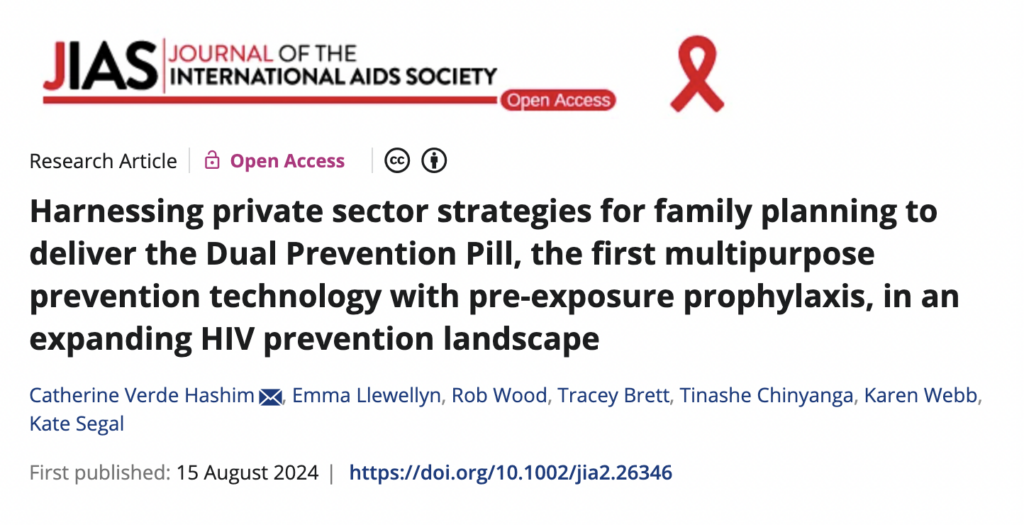August 20, 2024
Dear Advocate,
The latest edition of the Journal of the International AIDS Society features newly published research by AVAC and partners on the benefits of delivering family planning and PrEP using pharmacies, e-pharmacies and telemedicine, in addition to private sector clinics. The article, Harnessing private sector strategies for family planning to deliver the Dual Prevention Pill, the first multipurpose prevention technology with pre-exposure prophylaxis, in an expanding HIV prevention landscape, demonstrates why these delivery methods should be prioritized for rolling out the Dual Prevention Pill (DPP), a daily pill that combines oral PrEP with an oral contraceptive to prevent both unintended pregnancy and HIV.

The DPP is the Multipurpose Prevention Technology (MPT) closest to market and the first-ever with PrEP. Following the recent successful conclusion of a bioequivalence study, where researchers demonstrated the active ingredients functioned in the body the same as when PrEP and oral contraception are taken separately, the DPP could be approved by regulators by late 2025. The DPP could be a desirable choice for women seeking an option that will meet multiple needs in their sexual and reproductive health (SRH).
The research found that a significant proportion of family planning (FP) services in Kenya (22%), South Africa (11.4%) and Zimbabwe (17.3%) are delivered using the private sector (such as private provider networks, pharmacies, e-pharmacies and telemedicine). But these channels remain underutilized and represent a largely untapped — yet growing — delivery channel with great potential to expand access to PrEP.
“Addressing the underlying reasons why this is the case will be a prerequisite to DPP rollout, not just in these three countries, but in all countries with high HIV incidence where the private sector is a popular source for FP, such as Eswatini, Lesotho, Malawi, Namibia, Uganda and Zambia”.
The authors write.
Based on these findings, regulators should update national guidelines to allow for more diverse PrEP delivery. Training on PrEP delivery could be expanded among nurses and other providers, as well as doctors. Clinics, pharmacies, telemedecine and e-pharmacies could offer PrEP. Implementers and researchers should also undertake research to better understand willingness and ability to pay, how these factors align with the cost of DPP delivery, and what additional subsidy may be needed to ensure successful rollout of the DPP.
This research supports a Market Preparation and Introduction Strategy that is guiding plans for how, where and to whom the DPP is introduced. Providing users a range of options to access the DPP in non-traditional channels will minimize stigma, improve convenience, and offer discretion — all of which are features that will increase overall uptake and continuation. See our resources on the DPP below.
- The Dual Prevention Pill: Market Preparation and Introduction Strategy, informs priorities and planning for DPP rollout. See the Strategy Executive Summary here.
- Equipping Providers To Offer Novel MPTs: Developing Counseling Messages for the Dual Prevention Pill in Clinical Studies and Beyond
- Cost-Effectiveness of the Dual Prevention Pill for Contraception and HIV Pre-Exposure Prophylaxis
- How Might We Motivate Uptake of the Dual Prevention Pill? Findings From Human-Centered Design Research with Potential End Users, Male Partners, and Healthcare Providers